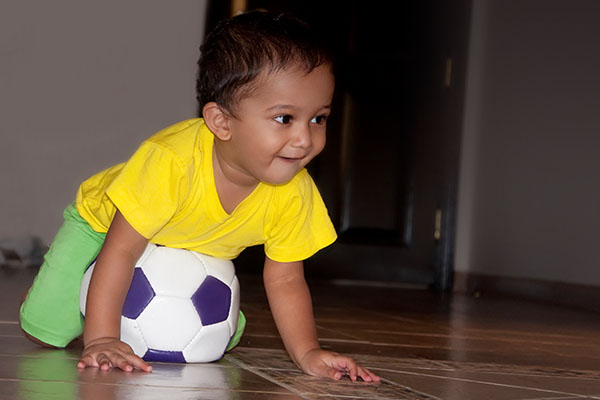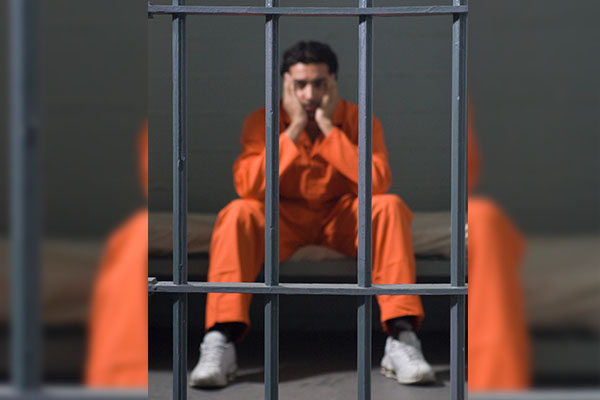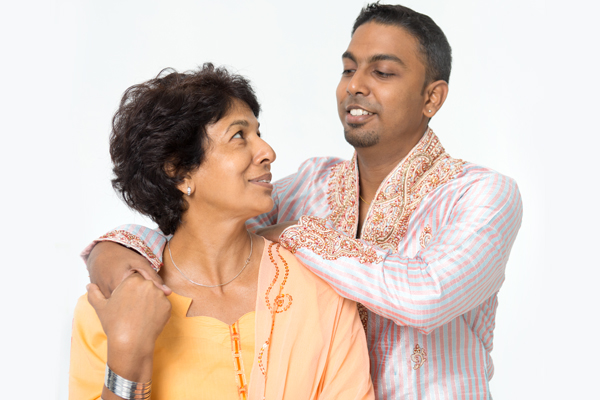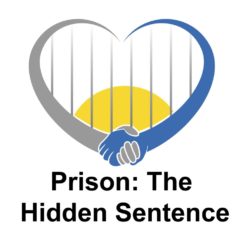
Imagine not seeing your son for over six months because he’s 3000 miles away in state prison. Rita arrived in Las Vegas so excited to see her son. When she told a friend that she needed to check the bus schedule, she was informed that there were no buses to the prison. When she checked taxis, Lyft, and Uber, they were over $100. She was at a loss. All she wanted to do was hug her son and tell him how much she and his family loved him. Luckily, her friend gave her a ride because she knew how important this visit was for Rita. This is a journey you will not want to miss. She’ll share the process that she had to go through to set up the visit and the glorious reunion with her son, even though it was only for five short hours.
—
Listen to the podcast here
A Mother’s First Visit To Her Son In Prison-Things You Need To Know With Rita
—
Julia, thank you for having me here.
It starts with a permission process. The person who is incarcerated, in this case, my son, had to write a kite and put down the names of the people that he wanted to visit him. I had to send him the names of his friends who wanted to visit him. In the kite, the inmate writes the name of the person, the date of birth of the person, and where the person lives. The address has to be given, so all this information has to go in. That’s first. What happens is that it goes to the visiting office. The authorities in the visitation office review the kite and send out a letter to each person on the kite. This process takes a while to review.
It’s a physical letter that they send to your address. When they send that form, you fill it out with your name, birth date, social security number, and if you’ve had any felony record. There’s a whole thing you write out and mail back to the prison. Each person who is on the kite that your family member has wanted to see and requested visitation with, that particular form goes to each person.
The family itself plays a vital role in restoring a human being that has been incarcerated for whatever reason. Share on XThe permission took a bit of time. They have a review process, check on your social security, your address, and whether you have a felony record. All of that is done before they send you a letter approving it. In my case, I had to move from Nevada, where he is incarcerated, to the East Coast. It took a long time before I got that approval letter. That’s the first step in the process. The next is you get the letter. I was unable to right away. It took me six months before I could come to visit him. It’s not an inexpensive journey and there were many calls that I made. The research was calling the visitation office and talking to the officers.
There are various officers that work with visitation. They do say that you can write us emails, but I did notice that they don’t reply to emails. This was later along the line, and I’ll come to that. Mostly, I talked to them on the telephone to find out what the criteria are for the visitation. At least 72 hours ahead of visitation, one has to write in and request for the visitation. You go to the visitation website and there is a place where you can fill in the information.
You’ve got to fill in the name of the person you want to visit, and the ID number, and then in which unit that person is in. When you do that, it gives you an option for the time period and date that you want to visit the person for. You fill all of this, and to that, they’re supposed to be replying back by email because you also provide your email to give you permission. I started the process once I came to Nevada. You can’t request for a meeting with your loved one 5 or 6 days ahead. It has to be that 72 hours.
They say that within 48 hours, they replied back by email, but that didn’t happen, although that’s what it says, so I had to call each time to ensure. I also wanted that I have this thing that I get to see him. For a longer time, I was told, “You can do that, but if you’re living far, they do allow you to visit for double the time as compared to the people who are living within 100-mile vicinity.” If you’re within 100-mile vicinity, you get to visit for two hours, but if it’s much greater than that, they allow you to visit for longer periods of time.
One has to know exactly what those time slots are because there are two different time slots in the day. You have to know when they have this change of time where you can get to see them. I got a 3:00 to 8:00 slot to visit my son. For other people who want to visit their son, it’s a five-hour slot. They get an 8:00 to 1:00 time to visit their loved ones. Basically, this is the process. It is long. I had to call back 24 hours ahead as well. I was told that there could be lockdowns. If there’s a lockdown, whether you come from afar or wherever you come from, you don’t get to see your loved ones. You have to be prepared for that eventuality that you have traveled miles and spent on airfare to come and see your loved ones and you may not see. That puts you in a very anxious state.

I got that information through a website, Prison Families Alliance. Someone was kind enough to talk about the clothing you need, what that process would be so that you’d be accepted, what you need to take in, and the amount of money you’re allowed to take in. You’re allowed to take in $40 and change. In terms of your clothing, you can’t wear anything blue and blue jeans. You can’t wear anything that is too revealing, particularly for women’s necklines. You also have to be careful about the brassiere that you’re wearing. If you’re a woman, there can’t be any wire in the brassiere. It has to be something that when they do a body check, they ask you to pull your brassiere up and release it so that if there’s anything hidden there, it will fall out.
With the clothing, they prefer that you wear conservative clothing, nothing that’s too revealing. You can’t have slits down the side or wear tight pants. This information is also on their website because I found it out from the Prison Families Alliance. It was, in a way, corroborated with what’s on the website as well. One has to be careful about that. You’re allowed to bring, as I said earlier, $40.25 that you can use in their vending machines to get yourself some refreshments.
This particular prison has a huge parking lot. You park and there are no real signs that point you towards visitation until you somehow find it. There were two officers there. I don’t know what the other one was, but luckily I picked the right path. When I came up to it, I noticed it was indeed visitation. I had the place I needed to go that I walked into. It’s a smaller room and the visitors who have come are standing. There are many lockers in that room, and then behind a glass chamber is the office of the prison visitation office. You line up, and one by one, you go to the booth and they essentially give you a paper that you have to sign with the name of the person you’re going to visit. You write your signature and where you’ve come from.
You have to put in your age and stuff like that. You also give them a photo ID card, which they then approve and then they stop you for the time period you’re visiting. When you’re finished, they will inform you. The lady that processed me through was very polite and helpful. She gave me a key for the locker to put anything I couldn’t carry into the visitation room. It could be placed over there. No pens and cellphones are allowed.
It is so important to be able to look your loved one in the eye and talk honestly. Share on XWhat I bought in was my ID card and the bag in which I had the money. It was a clear bag that a friend gave me to bring in. In that bag, there was $10 worth of $0.25 coins. We had to take all those coins out of those rolls and place them in the bag. You were allowed to bring the key that they gave you that you locked your locker with and your ID card. These were the things that you could carry in. I did carry that in and waited a little bit more in another waiting room where there were some other family members waiting. They tell you they bring you in, and they do a body search. The body search was quite respectful.
Yes, there was. They walk you through a metal detector first, and then you give your card to a guard who was there. I was expecting to get my card back because I thought that you could carry your card in because I don’t like to leave my ID card. I was a little confused over there. It wasn’t very clear as to what I should be doing. The lady who was going to do the body check came and said, “The ID part is left over here. When you return, that’s when they’ll give you your ID card back.” I would say that they were very polite.
The lady who did the body check was the same lady who processed me in. You turn to the wall and put your hands against the wall. They pat you down all the way from the top of your body to your feet. You’ve got to do this without shoes. I didn’t mention this earlier. Part of the dress code is that you have to wear covered shoes. You cannot wear sandals with your toes or your heels sticking out. I had to take off my shoes and socks, and then you stood against the wall with your arms outstretched. They’ll pat you down the back, then you turn around, and pat you down the front.
The lady asked to pull the bra forward so that there was nothing there. That was it for the pat down, and then they allow you out. She told me, “I’ll tell you where to go.” I was told to follow a lady who had proceeded me to go to the visitation center, so I followed her down. It seemed like a long road down to where the visitation base was, at least in this particular prison. Where the prisoner quarters and the visitation are separate spaces. I was led into the visitation room, and the CO was there for visitation. They guide you to which table you’re supposed to be sitting on essentially.

There are cameras all around. They don’t record your conversations with your family. There are these wooden tables and your loved one sits across from you. The rule of this meeting is that you get to hug your loved one time when you come in and then when you go out. I must say that on the prison site of visitation, they say that there is no hugging allowed even. That might have been because of COVID rules because I was told that you are allowed to hug once when you go in and once when you’re leaving. You’re also allowed to touch the person’s hands below the elbow while sitting down.
They don’t bring in the inmates until you have come and you’re in the room. They had vending machines. Some of those vending machines were working. Some of them were out of order but clearly marked the ones that were out of order. It was mostly pocket snacks. There were no sandwiches or anything like that. It was Doritos, potato chips, and cookies. There were vending machines for the drinks. It was mostly sodas, some orange juice, Gatorade, and water. There was a couple of each vending machine for snacks and drinks. I was advised by my friends that you should go ahead and right away get the drinks and the snacks you want, so that’s exactly what I did.
When I turned around, I saw my son, who had waved out to me. He was a little surprised to see me from the back because my hair had grayed a lot compared to what it was. He was wondering, “Is that my mother?” It is harrowing for anybody who goes through this process and what it could do to you physically. He was glad that, otherwise, I looked happy. We hugged each other, and it was amazing. It’s so amazing to be able to tell the person that you’re there and you will always be there for them.
It’s extremely important to experience. It’s very heartwarming. I couldn’t be more grateful that I got the chance and I had the ride to go meet him because I don’t know how I would have paid for that expense of a ride. It was $100 to get there and $100 to come back. You’re not even sure whether you can get a cab back because there are no cabs over there, and nobody wants to come out for it. No one wants to come out that far. Besides, there’s no cell phone service there. If you’re not being dropped off and picked up with some arrangement, you cannot visit.
I was so grateful that I was able to visit him, sit across him, look him in the eye and talk to him about what was going on in his life, the things that were affected in his life, the incarceration, his concerns, his thoughts, and all of that. It is so important to be able to look your loved one in the eye and talk honestly. One of the things that my son did tell me was, “Ma, it is so beautiful to look into the eyes of someone who loves you because you don’t feel that over here. That is not there. That exchange is not there.” This is not to say that there aren’t good people.
There are good people everywhere, even in prison. There are good COs and inmates. All of that is there. For the most part, it is a very hard reality. For a loved one, to have their friends and family visit them and assure them of who they have been in their life and who they will always be in their life is extremely important. I cannot stress it even more. Never let a person alone who has been incarcerated. It is a harrowing experience to be there. It’s very important. I hope this has helped.
There are good people everywhere, even in prison. Share on XMy son is deeply loved by his friends and his family. I had a message for him from his aunts, sisters, and my husband. All of them were very reinforcing. His eyes would be sparkling because he knows. He has experienced their love and care. It was reaffirmed to him how much he is loved and missed on a day-to-day basis and how we are there. We’re waiting for him to be out to hug him so tight and we’re there. That was very important. I’m glad you asked me that question.

Everybody that goes in, many of them will return to society. There are those who don’t, but many will. Perhaps 70% to 80% will return to society. The process of being isolated, the incarceration itself is the punishment. Restoration has many aspects, but the family plays a very important role in restoring a human being who has been incarcerated for whatever reason. It is extremely important that the family stay close in touch. I will go back to what my son told me. He said, “Mom, it is so important to look into eyes that love you that reflect back love.” It is all about love, caring, and empathy. It is about restoring that human being to their dignity.
Thank you, Julia. Thank you for giving me this opportunity. I hope it helps others.
Important Links
About Rita
 Rita is passionate about human rights and social justice. She also has a background in yoga and permaculture design. Rita has worked to enhance communities in three countries to raise awareness about social and ecological issues. She has organized cross cultural exchanges in education, arts, and performing arts. She is researching incarceral systems in other countries such as Norway and Germany, who practice human dignity and restorative justice. Her goal is to work with groups on reform so there are no wrongful convictions or recidivism.
Rita is passionate about human rights and social justice. She also has a background in yoga and permaculture design. Rita has worked to enhance communities in three countries to raise awareness about social and ecological issues. She has organized cross cultural exchanges in education, arts, and performing arts. She is researching incarceral systems in other countries such as Norway and Germany, who practice human dignity and restorative justice. Her goal is to work with groups on reform so there are no wrongful convictions or recidivism.
Love the show? Subscribe, rate, review, and share!
Join the Prison: The Hidden Sentence Community today:

Jail Aid says
The families are the hope. The incarcerated ones are also thinking of why they should survive of being incarcerated, with enough reasons, they will survive.
Jail Aid says
The families are the hope. The incarcerated ones are also thinking of why they should survive of being incarcerated, with enough reasons, they will survive. Rita’s sacrifices worth it and it’s really a good time to share it with the world.